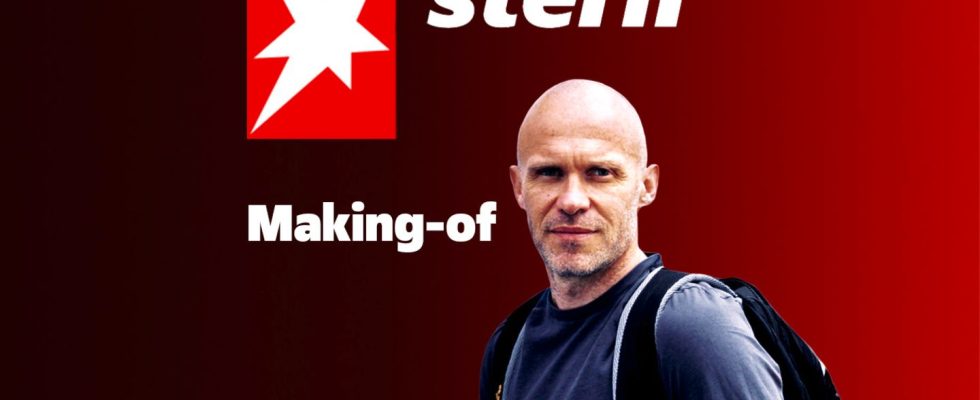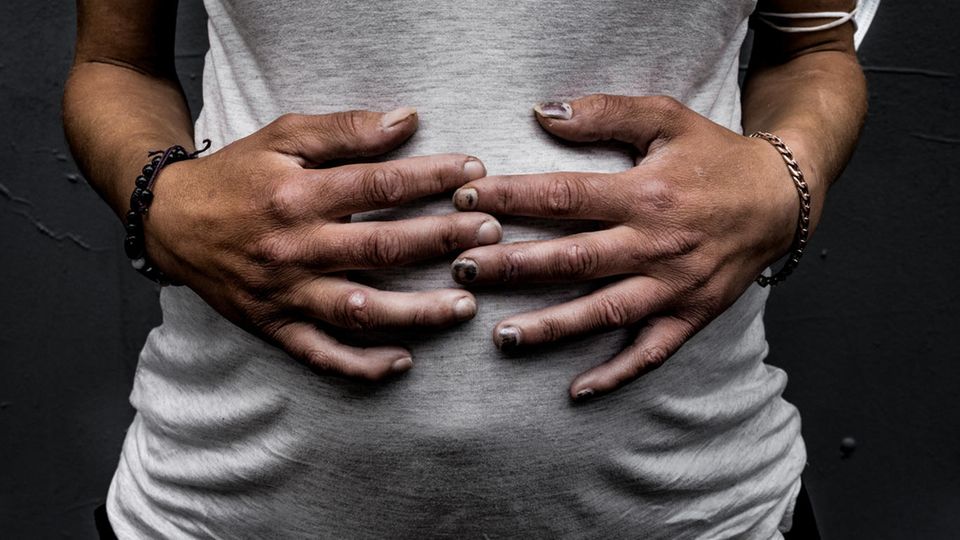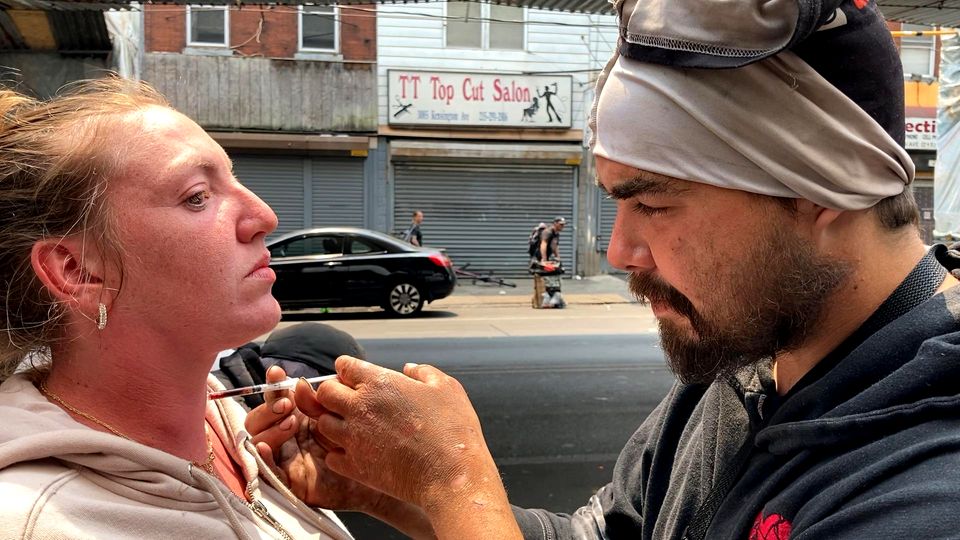Our reporter knows Latin America and its drug cartels well. He lived in a favela for several years. After researching the opioid crisis in the USA, he discovered that the actual drug lords are somewhere else entirely.
Making-of is the name of our new format. We want to give you a personal look behind the scenes, tell you about our everyday journalistic life and our research. We’re starting a little series looking back at our moments in 2023.
I had been in the Kensington neighborhood of Philadelphia, the hotbed of the fentanyl epidemic in the United States, for seven days when I had a somewhat eerie encounter at a kiosk on Allegheny Avenue. Three drug dealers, of which there are several hundred in Kensington, asked me: “What do you want here?”
“I talk to people,” I said.
“About what?”
“About life in Kensington, for a magazine from Germany.”
Actually, I should have answered: About the many victims of this terrible drug epidemic. They die before your eyes and you sell them the kill shot.
“None of your business,” they replied.
I said something like, “Isn’t it sad that so many young people are dying here?”
“None of your business,” snapped one.
“Get out of here,” another – “get out of here”!
As a reporter, I was in a number of crisis areas, in Afghanistan, Iraq, Syria, but the drug gangs always seemed the most dangerous to me. Especially because they are so difficult to predict, so moody, so different. In El Salvador, family man Zeus, a local leader of the Barrio 18 street gang, recounted candidly and in detail how they had massacred dozens of their rivals, most notably from the notorious MS-13 gang.
In Guerrero, Mexico, we were reporting on organized crime there when armed gang members, presumably the Guerreros Unidos, stopped us on the road and told us to leave the country immediately. They could only have found out about our presence from the local police.
In Colombia, I spent two weeks in the jungle with a unit of the Marxist guerrilla FARC when I realized they were more concerned with the lucrative drug trade than the socialist revolution.
Drug traffickers in Latin America take on multiple roles at once
It’s a bit complicated with drug traffickers in Latin America. They change sides frequently. They are police officers, guerrillas, politicians, rappers and family men at the same time.
In Brazil I had a very different kind of encounter. I lived there for two years in a favela that was controlled by drug lords from the Comando Vermelho cartel. They see themselves as authoritarian rulers and even regulate marital conflicts, neighborhood disputes and curfews, laying down draconian laws such as: Anyone who steals from a resident will have their finger chopped off.
The rule for me was: I could live in the favela, but I couldn’t report on the drug trade.
Once, not far from the favela, two young people stopped me in my rental car with guns drawn, forced me to get out and drove away. Classic carjacking. Frightened, I told my landlord, who must have passed on the news. When I came from the police station, where the officers showed very little interest in my robbery, my landlord received the information from the gang leader: The case has been solved. The car was found intact, 50 kilometers away, north of Rio. I could pick it up.
I didn’t dare ask what he had done with the robbers.
Hundreds of thousands of drug deaths, criminals in suits and a big lie
But the biggest drug gang I ever had to deal with was the Purdue pharmaceutical company owned by the Sackler family. They are the manufacturers of Oxycontin, the opioid painkiller that addicted millions of Americans and, according to the NIH (National Institutes of Health), triggered the current opioid crisis, as a result of which more than 450,000 people have died. At the same time, the company paid millions in bribes to researchers and doctors who spread the word that the drug was completely harmless.
As a reporter you could somehow talk to all the gangs, but not to the largest drug gang in the world, the Sackler family. The opioid had made them multi-billionaires. They let public relations agents tell them that they had nothing to say and that they employed highly paid lawyers to deal with persistent reporters.
When reporting on the drug wars, you deal with a lot of bad characters, including the fentanyl hotspot of Kensington in Philadelphia, but none are as bad as the criminals in suits and lab coats. Legally, they have probably made more money and destroyed more lives with synthetic drugs than all of them put together – the Sinaloa Cartel and Comando Vermelho, Barrio 18 and FARC, Guerreros Unidos and the small-time dealers of Philadelphia.
You saw me on Allegheny Avenue in Kensington many times during the star-Research in the summer, but there was nothing more than dark looks.



